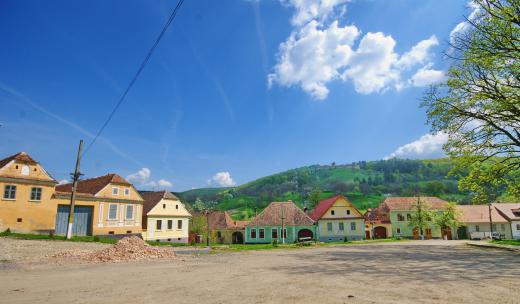What is the Largest Flying Animal That Ever Lived?
 Michael Anissimov
Michael Anissimov
The largest flying animals that ever lived were members of the Azhadrichidae family of pterosaurs, flying reptiles that lived around the same time as the dinosaurs, though they were not actually dinosaurs. The name "Azhadrichidae" comes from the word Ajdarxo, a dragon in Uzbek mythology. Two members of this family that contend for the title of largest flying animal ever are Quetzalcoatlus, whose fossils have been found in North America, and Hatzegopteryx, found in Transylvania. Both these animals had a wingspan of 12 m (40 ft) or more, about the size of a school bus. By comparison, the largest flying animal today, the Wandering Albatross, has a wingspan up to 3.7 m (12 ft).
Both these pterosaurs lived in the late Cretaceous, between about 85 and 65 million years ago, until they went extinct with the dinosaurs at the Cretaceous-Tertiary extinction. During the Mesozoic era, pterosaurs had a niche similar to the birds of today, dominating the skies. They had little competition there, as no dinosaurs could fly, and birds were not nearly as numerous as today. The largest pterosaurs probably spent a lot of time on the ground like storks, and examination of their skeletons shows that they would have been capable walkers, moving using the long claws at the tips of their wings.

Before Quetzalcoatlus and Hatzegopteryx, scientists had discovered several large pterosaurs that were the largest flying animal known at any given time. Even though these were smaller than the aforementioned birds, scientists also had a tendency to believe that each new large pterosaur discovered represented the largest an animal could be and still fly. This idea has been disproved time and time again, and there could be still larger pterosaurs in the ground. Like birds, these animals had numerous specialized adaptations to decrease their weight for flight. The bones are filled with internal pits and hollows called alveoli.
The largest flying animal that ever lived was also a descendant of the first vertebrates to take to the air. Prior to the evolution of pterosaurs, only insects were able to fly. Since pterosaurs went extinct, the largest flying animal at any given time has been much smaller than in the past -- giving us false ideas about how big the largest possible flying animal can really be. These fossil discoveries have changed our attitude on the issue.
AS FEATURED ON:
AS FEATURED ON:











Discussion Comments
@MrsPramm - I think that applied more to insects than other animals because they breathe in a different way. A denser atmosphere makes it easier for them to grow larger, because they don't have lungs.
It makes me sad that we'll probably never get to see creatures like pterosaurs in the sky. But I guess it's just cool that we can find their bones and try to figure out what they would have looked like.
@Ana1234 - I might be wrong, but I'm pretty sure that they would never be able to survive today, because they lived in a time when there was a higher oxygen ratio in the atmosphere and it was easier for them to breathe and get enough oxygen to fly.
I know that was definitely true for the very large insects that used to exist. They simply couldn't live in the kind of air we have today.
But there are much more recent predators that you may be grateful are extinct.
Haast's eagle, for example, was definitely a bird that would take away children (they lived in New Zealand and there are legends there of a giant, monster bird). It's extinct now, but it was the biggest eagle that we know existed.
I've got to admit, I'm impressed by the albatross with a twelve foot wing span, let alone a creature with a 40 foot wingspan. I'm pretty glad that we don't have them around today, although I guess if they mostly hunted over the ocean they might not be as much of a problem as I'm imagining.
Post your comments